Who do you turn to when you need advice, guidance or support? It certainly helps if the person in question has been through a similar experience or can directly relate to your circumstances. They’ll know exactly what to say, how they can help, and be able to genuinely empathize with your predicament.
The same goes for the customer service industry. For professionals to best serve and support their customers, they must truly know and understand them, which is why customer service teams need diversity in order to thrive.
In this article, we’ll outline how to respect cultural diversity in customer service, explore the importance of equality and diversity in customer service, and some of the many benefits associated with increased diversity in this industry.
From reduced turnover rates to happier employees, better customer relations, and increased innovation, the benefits of improving diversity in customer service are far-reaching. This guide should leave you with an appreciation for diversity in customer service, and actionable tips to improve it in your workplace.
Myth-busting: the difference between diversity and inclusion
A diverse workplace is one in which people from marginalized communities are fairly represented. Factors such as race, religion, ethnicity, age, gender identity, sexuality, ability, or socio-economic background can negatively impact someone’s opportunities throughout recruitment processes and in their long-term careers, which means they may be underrepresented in the workforce.
Most crucially, an inclusive workforce ensures that people from these marginalized communities do not endure any discrimination or unfair treatment that could preclude them from advancing in the workplace at the same rate as their more privileged peers. Inclusivity in the workplace provides everyone with the support they need to reach their full potential, feel comfortable at work, and be their authentic selves.
Building a diverse workforce is certainly important, and often naturally leads to a more inclusive one. But organizations must invest sufficient time and resources in both diversity and inclusion initiatives to truly reap the benefits.
In PwC’s 2021 Diversity & Inclusion Benchmarking Survey, 75% of respondents claimed that D&I is a value or priority area for their organization. Meanwhile, Deloitte’s Global Human Capital Trends report revealed that the importance of diversity and inclusion has increased by 74% in the past three years.
However, while most organizations know it’s important to prioritize diversity in the workplace, that doesn’t mean they are going about it in the right way or committing sufficient resources to advance their efforts. This is evidenced by the fact that 50% of workers stated they have been held back by discrimination at work.
So what is diversity and inclusion in customer service and why is it so important to foster diversity in this sector? Below, we outline nine of the key benefits to inspire teams to take action.
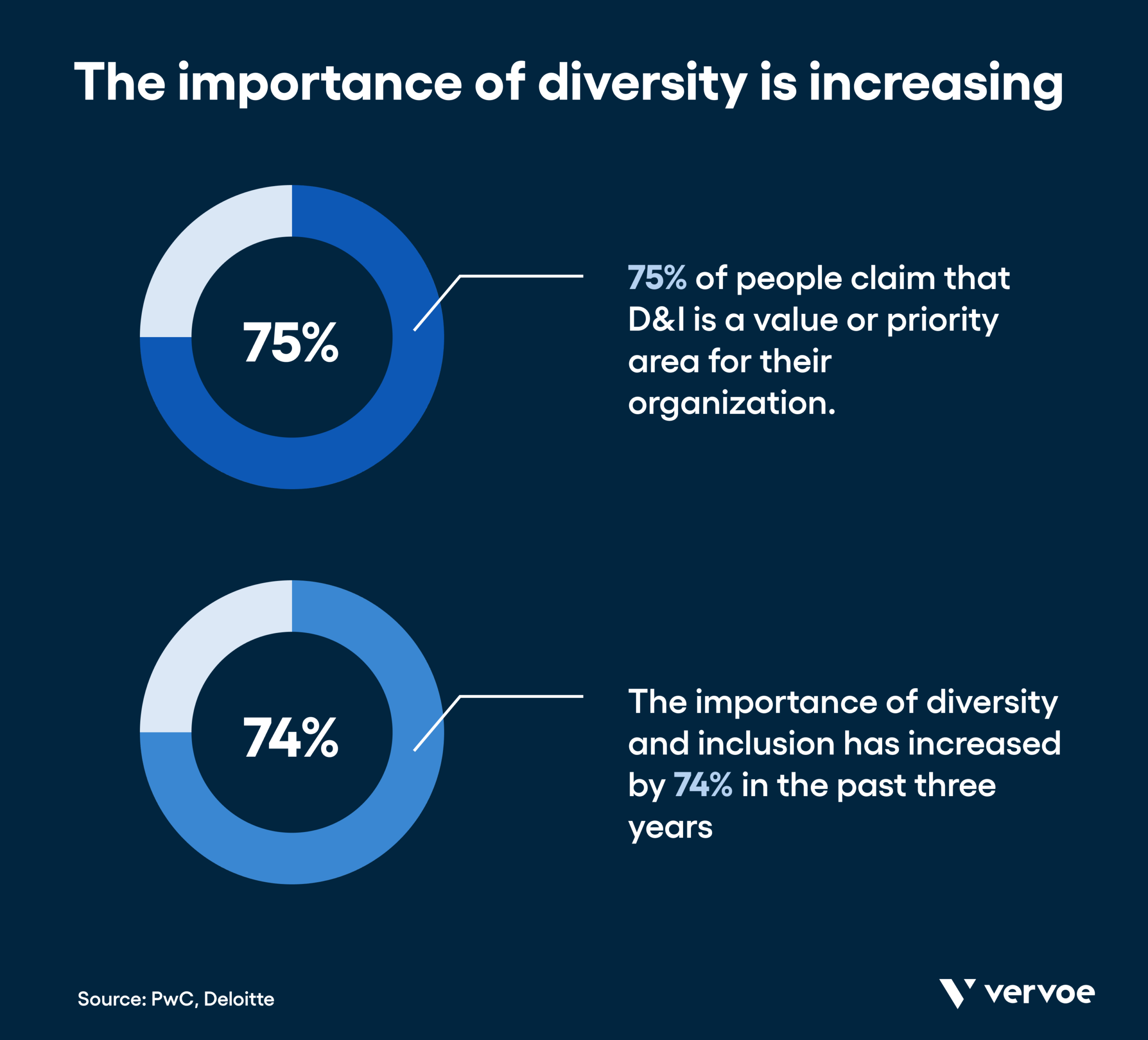
Nine benefits of diversity in customer service
1. Better customer service
You’d be hard pushed to find an industry whose customer base didn’t include people of different religions, races, sexualities, gender identities, socio-economic backgrounds, abilities, and ages. Embracing cultural differences in customer service empowers professionals to better predict and accommodate the needs of their customers, as well as connecting with them on a more meaningful and human level.
Forrester’s 2018 Customer Experience (CX) Index concluded that CX teams must foster empathy to create and sustain human connections with their customers. It figures that teams with more cultural diversity in customer service communication will be better equipped to empathize with a diverse customer base.
An LGBTQIA+ employee, for example, understands the discrimination and alienation so often endured by members of their community. As a result, they will be able to provide crucial insights into how best to communicate and engage with their LGBTQIA+ customers fairly and respectfully. This could include removing gendered language from communications or challenging outdated assumptions about customers’ lifestyles, relationships, and preferences.
2. Innovative and creative solutions
Diversity in the workplace and customer service teams will contribute varied and unique perspectives, opinions, and experiences to solve problems and overcome challenges — ultimately driving innovation and creativity.
In 2019 Wall Street Journal analysts concluded that the 20 most diverse S&P 500 companies performed better over a five and ten-year period than their non-diverse counterparts.
If homogenous teams are a breeding ground for groupthink and “we’ve-always-done-it-this -way” attitudes, diverse teams are the ones thinking outside the box, taking risks, making difficult decisions, and challenging the status quo. The passion and enthusiasm generated when a diverse group of people come together to achieve business objectives via innovative methods also mean these teams are more likely to get the job done.
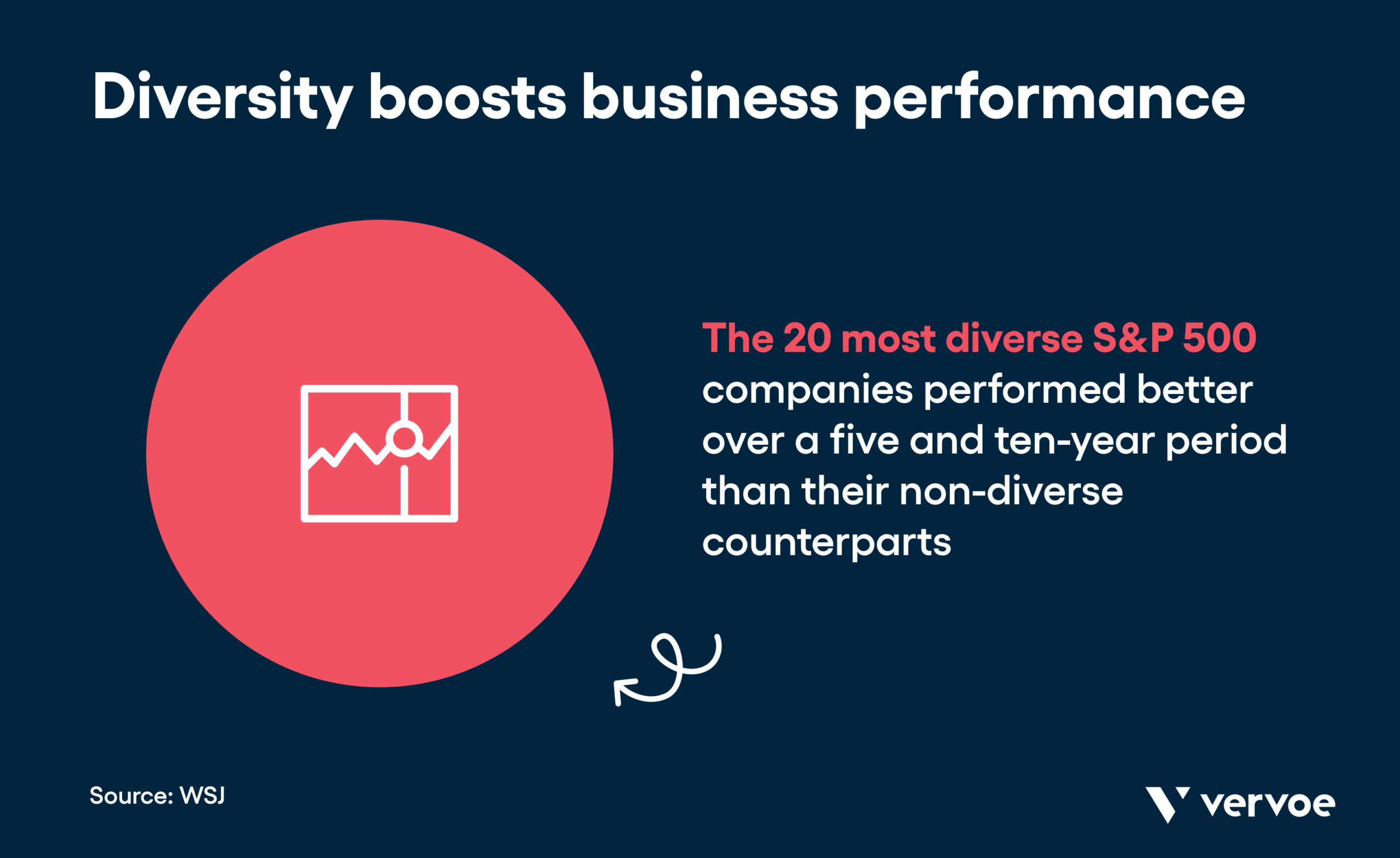
3. Creating an engaged workforce
Statistics show that engaged employees are 17% more productive than their peers. They will also be more satisfied, happy, and loyal to their employer. It’s particularly important that professionals in the customer service industry are highly engaged because they are more likely to advocate for their employer and deliver top-quality experiences dealing with diversity in customer service. Not only does this enable organizations to attract more top talent, but it can help them to build their brand reputation and ultimately grow their customer base.
Diverse organizations are far more likely to boast an engaged workforce, in part because employees from marginalized communities will feel safer, more included, and motivated to do their best work. Research shared in this diversity in customer service article by Rewardian also shows that the workforce at large cares deeply about diversity and inclusion. They will be more engaged as a result of working for an organization that prioritizes the wellbeing of all employees and pursues meaningful goals and objectives.
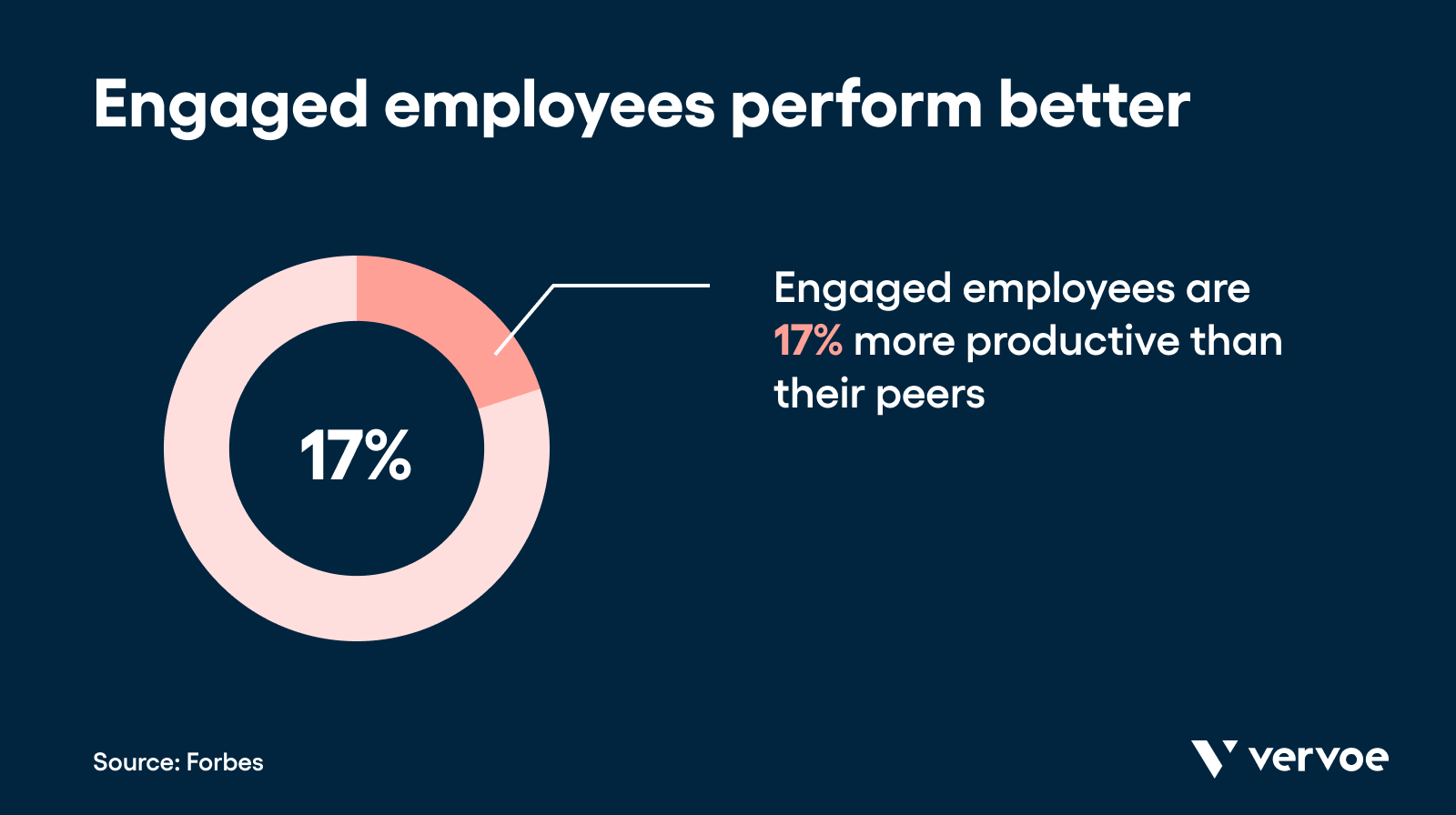
4. Fostering an inclusive work environment
In much the same way that diverse team members will advocate for their diverse customer base, they will also help their employers to foster an inclusive environment in the workplace.
A study by the Boston Consulting Group (BCG), for example, found that men aged 45 or older are the biggest obstacle to advancing diversity in the workplace. This is because they fail to prioritize the initiatives most often advocated for by their more marginalized colleagues such as gender-neutral bathrooms, mentorship programs, parental leave, and childcare support.
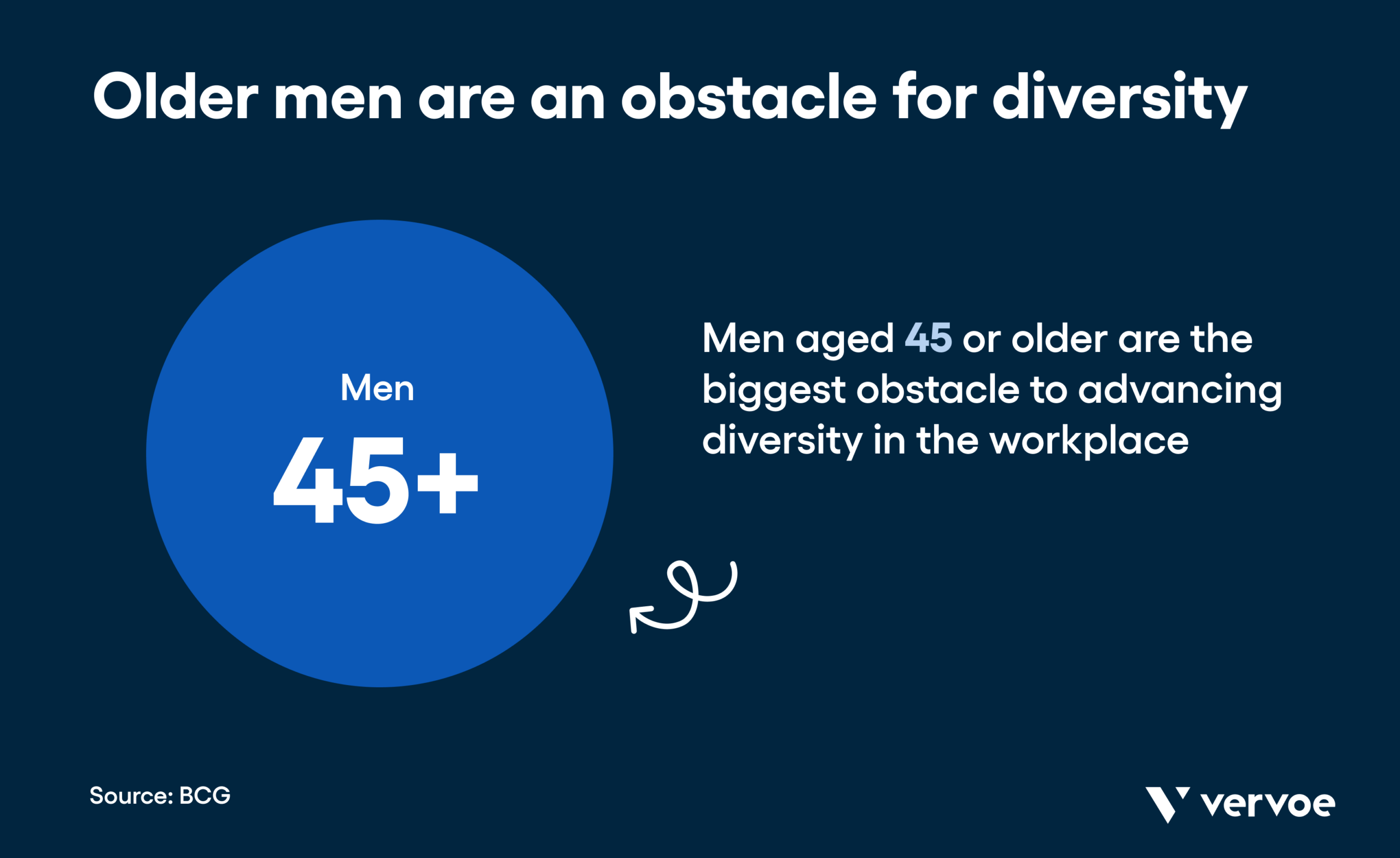
Employees who are motivated to help drive these changes are integral to establishing a workplace culture where all employees feel confident and comfortable in being themselves.
Research by Diversity and Ability shows that 77% of employees with a disability choose not to share details of their disability at work, 46% of LGBTQ+ employees keep their sexuality hidden, and 75% of all employees choose to mask or downplay their differences.
A safer, happier, and more motivated workforce will be more determined to drive results for their employer.
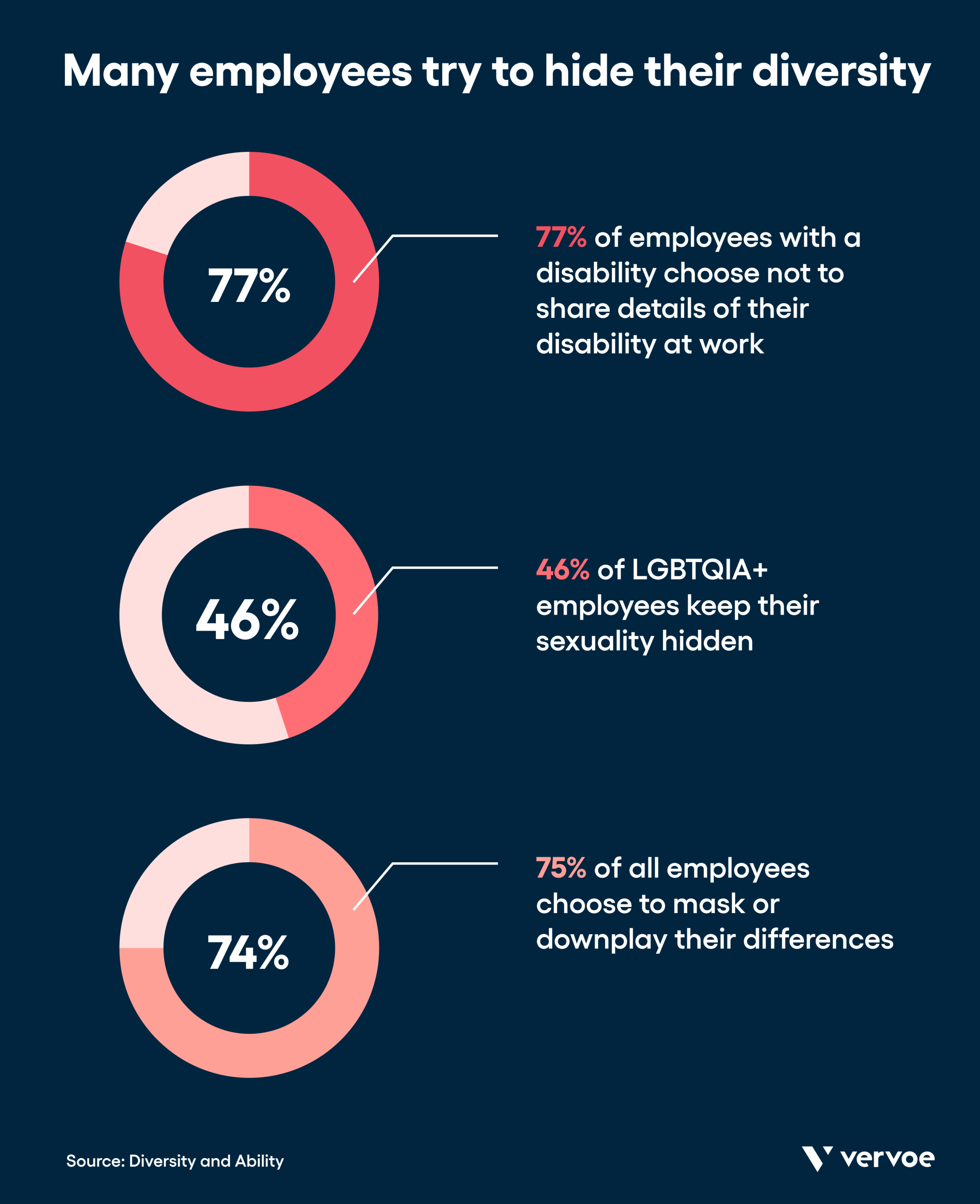
5. Attracting more diverse talent
Inclusive customer service teams will attract diverse candidates. Most people from marginalized groups will have experienced some form of workplace discrimination, whether in the form of microaggressions, outright abuse, or missed opportunities. It’s no surprise that the pressures and stress that come with navigating a sometimes hostile environment mean that diverse employees will prioritize working for diverse employers.
Glassdoor’s 2020 Diversity Hiring Survey found that a diverse workforce is an important factor for 76% of people when it comes to evaluating prospective employers or job offers.
Meanwhile, 32% of employees and job seekers claimed they would not even apply for a job at a company where there is a lack of diversity among its workforce. It’s clear that if organizations want to attract and retain top talent, they’ll need to prioritize building diverse teams.
6. Solving problems faster
As previously discussed, diverse teams are comprised of professionals with different experiences, opinions, beliefs, and approaches. It figures that the collective brainpower of such a team will facilitate unique and fast problem-solving.
Research from the Harvard Business Review revealed that a diverse team will solve problems faster and more efficiently than their non-diverse counterparts thanks to its increased cognitive diversity. Indeed, research by Cloverpop found that inclusive teams make better business decisions up to 87% of the time, and make those decisions twice as fast within half as many meetings.
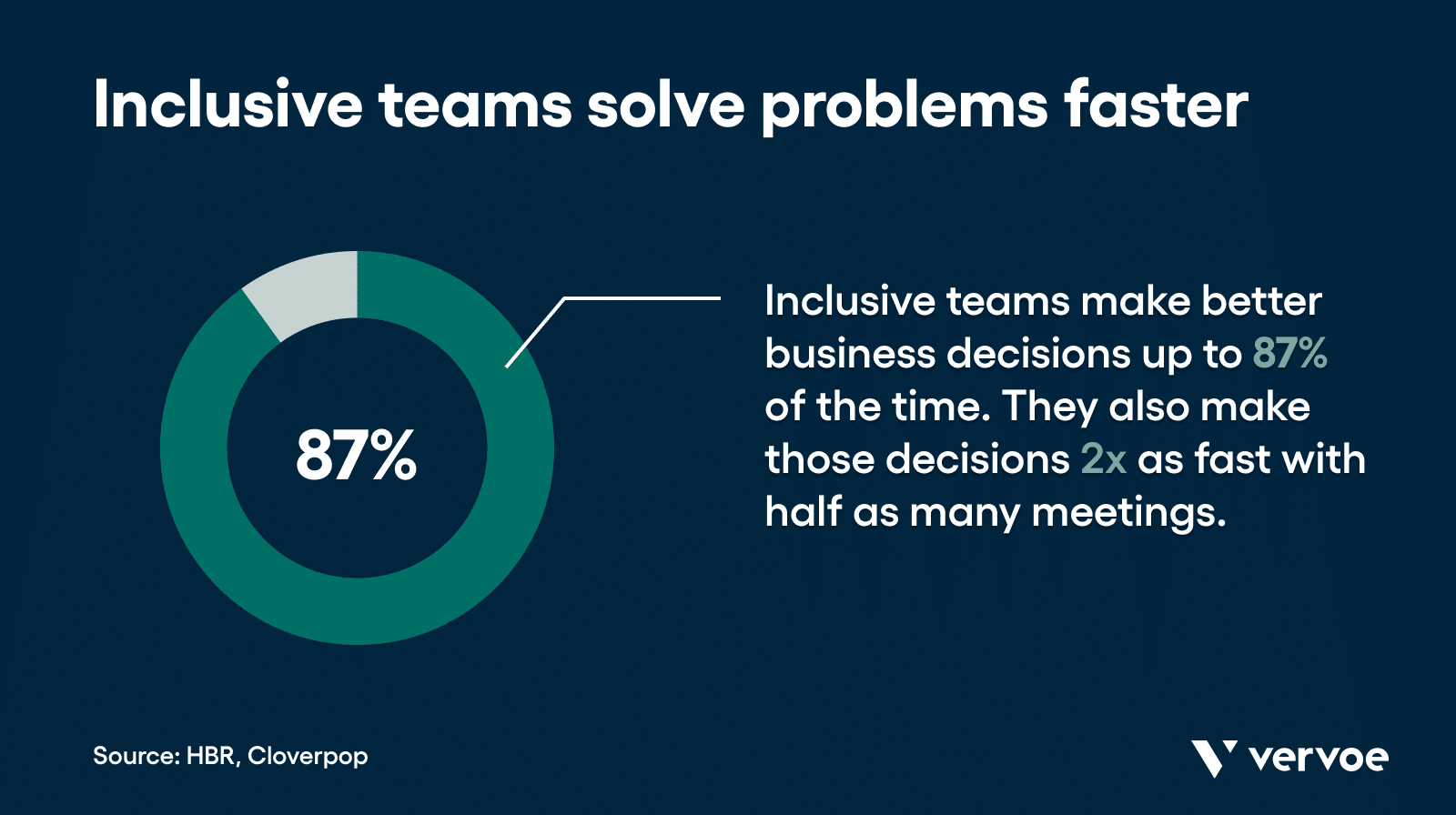
7. Improving employee retention
When an organization prioritizes diversity and inclusion in the workplace, it sends a signal to its employees that their individuality and unique contributions are welcomed, encouraged, and valued. As a result, employees are more likely to feel a sense of belonging and loyalty to their employer, which can improve retention rates. Reducing employee turnover is a top concern for organizations, and not just because replacing top talent is expensive. Long-serving and high-performing customer service employees will have a bigger impact on your organization’s bottom line, which is due in part to the meaningful customer relationships they forge.
On the other hand, an employee who feels isolated, discriminated against, or unable to bring their full self to work, will be on the lookout for new job opportunities.
8. Establishing diversity as a core business value
Diversity initiatives cannot be half-hearted or tokenistic, which is why organizations must ensure their efforts to advance diversity are informing their core brand values, vision, culture, and day-to-day workplace operations. In doing so, diversity and inclusion can be fostered in every function, and at every level, of the business, from the leaders in the C-suite to the customer service team.
When these core values successfully permeate through a workplace, whether it’s via good internal communications, customer service diversity training and education, or senior staff who lead by example, employees will be more mindful about how they do business and how to engage and interact respectively with all their colleagues and customers.
9. Better financial results
Several studies have shown that diverse workforces lead to better financial results.
According to Gartner’s research, for example, 75% of organizations that embrace inclusive strategies and have diverse talent on their front-line decision-making teams will exceed their financial targets. Meanwhile, in 2019, McKinsey reported that companies in the top quartile of gender diversity on executive teams were 25 percent more likely to experience above-average profitability than their competitors.
In the customer service sector specifically, this article has addressed how increased diversity drives employee retention, productivity, wellbeing, and motivation. These factors, along with the fact that professionals will develop more meaningful relationships and deliver better customer service, will boost an organization’s revenue and profitability.
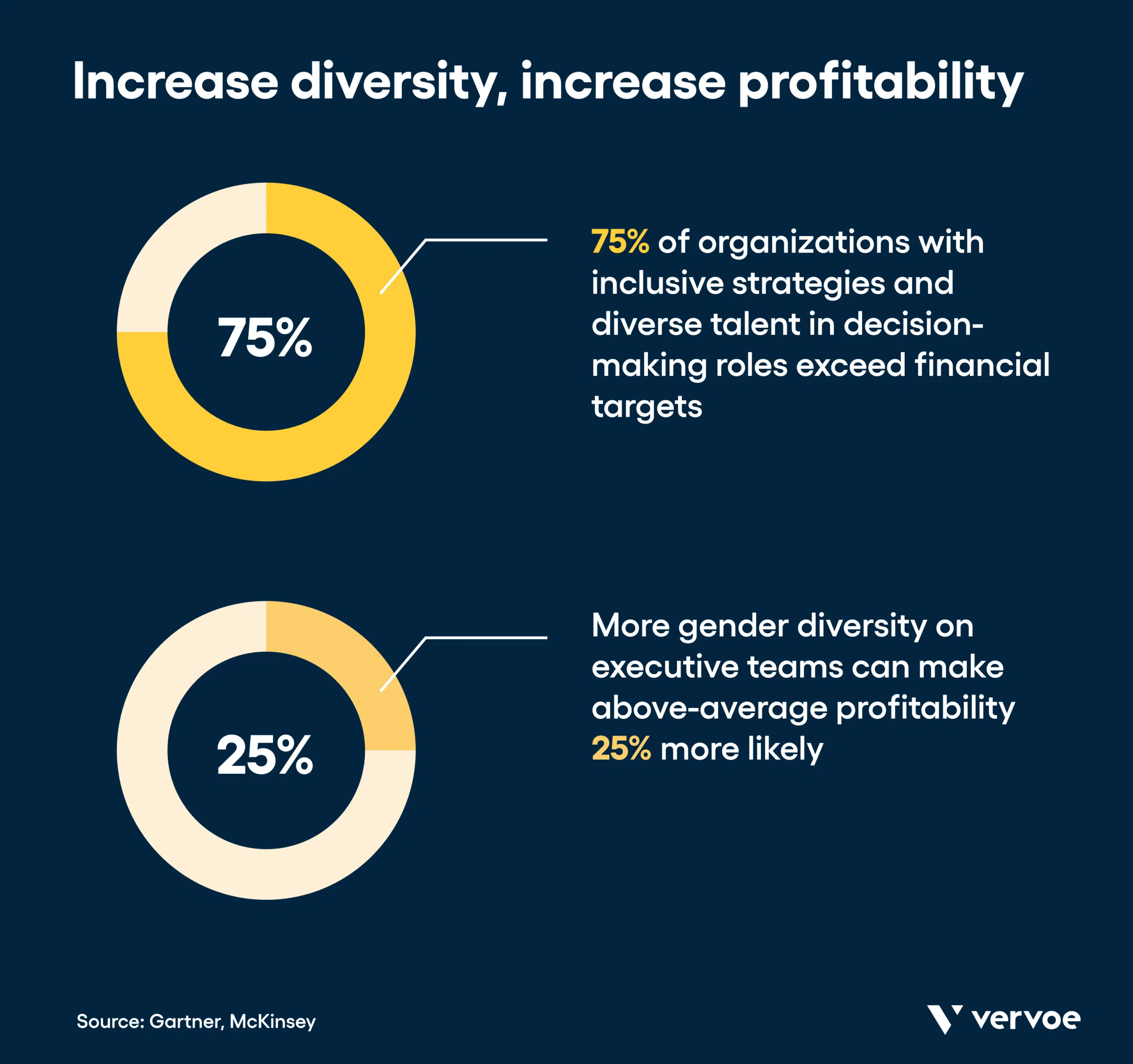
Final thoughts
All organizations can benefit in the long-term from prioritizing diversity and taking an inclusive approach to customer service, no matter what their long-term goals and objectives or the demographic of their customer base.
The improved employee retention, financial gain, happy work environment, efficiency, recruitment of higher-caliber talent, and innovation that come with increased diversity will ensure customers receive top-quality service and reflect well on an organization’s brand. Check out our Diversity Recruitment Software to improve improve diversity in your hiring process.




















